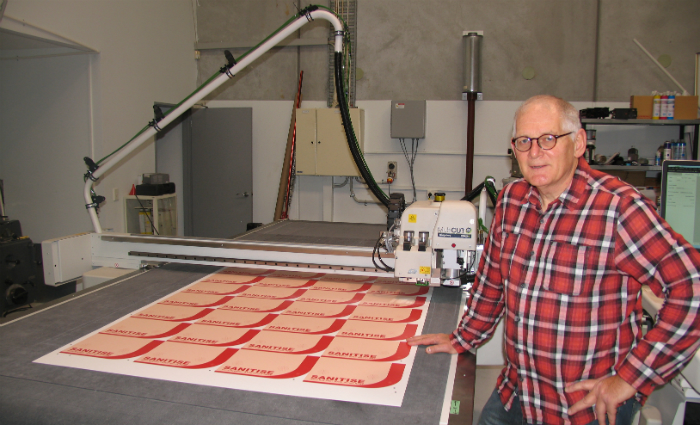Installing a Kongsberg XN24 cutting table, from Fujifilm Business Innovation, has helped Auckland’s I Print On Demand understand how much more it can achieve.
Pete Mills, managing director at I Print On Demand, says, “The Kongsberg table has us thinking about making a profit from printing in a whole different way. This makes all of our other printing equipment relevant. It’s that old saying: ‘The job is not over until it is finished.’”
The company performs a large amount of work for other printers. He says, “We don’t advertise but about 80 per cent of our work is trade printing. We are not in the mass market. We work in the area where people need smaller runs and more on demand jobs; often jobs that other companies can’t do or don’t have the time or equipment.”
“The Kongsberg table unlocks the world of wide format and short run finishing. We can do a run of 10 boxes and make a profit. It’s about tying all of your machines into a cohesive print operation and getting the sales. You have to work out the best way to employ the equipment you have for each job; how you can make it work best.
“If you get the right equipment, you can do the work you need to do to make a decent profit. It is impossible to do these jobs without a cutting table. A lot of printers get asked to jobs they can’t do; we can do those jobs and we complete a huge variety of work and, with the Kongsberg, we haven’t found anything we can’t do yet. It cuts a range of material, textiles, ACM, corflute; you name it.”
New applications
THE Kongsberg cutting table has unlocked new applications for I Print On Demand. Mills says, “We have been able to turn ordinary printing jobs into high value jobs, simply by looking at how we can use the cutting table in different ways. And often, it is the more complex job and more profitable jobs where, when you think about it and use the cutting table, you can make them even more profitable.”
I Print On Demand’s customers all know Mills by his first name. He says, “Our market covers companies who we can offer a broad range of print services to, so having the cutting table is ideal. We get quite a few last minute jobs. With this trade approach, we often find ourselves as the ambulance at the bottom of the cliff rather than the person directing traffic at the top.”
The company has gained a reputation for promotional material. He says, “We have found ourselves doing a lot of specialty work like intricate box work and making corporate gifts. It is relatively easy to do to create quite special printed material.”
Mills, well-known in the industry, has over 40 years’ experience to call on. He runs the plant with two staff who perform a range of skills.
He says, “Between me, Bevan and Ursula, we can run everything here. Minimum wage is not an issue; we have moved on from that. It would be great to get young people into the game and to upskill them but I have not been approached in the past 10 years by anyone, educators or parents, to see if their son or daughter or pupil can get a job.”
Business confidence has fallen recently but Mills sees right now as a good time to be in the industry.
He says, “What happens when you are a small player, print buyers within organisations tend to go with the big corporate type printers. But when business confidence falls, people break relationships and they look for other players.
They re-evaluate what they are doing and re-evaluate their budgets. They ask, ‘Do we need to invest in all this printing and packaging?’ Opportunities open up and when they spend more on infrastructure and social service spending, that flows into the printing industry but when times are better, they don’t necessarily spend more on print.”
He now sees the Kongsberg as indispensable.
He says, “If you asked me, of all the things I have, what would be the last to walk out the door, it would be this cutting table.
“It has given us access to new revenue streams because it unlocks the door to blend together a range of equipment to enhance our offering.


